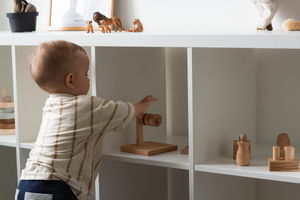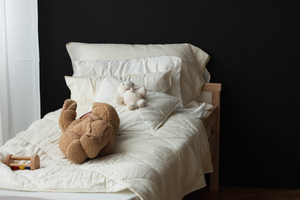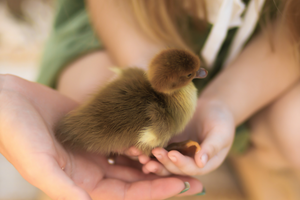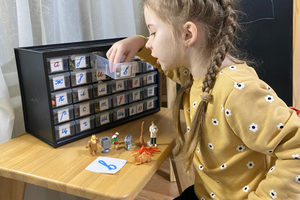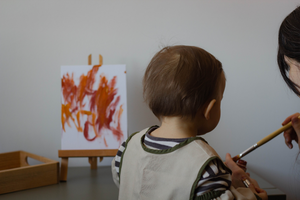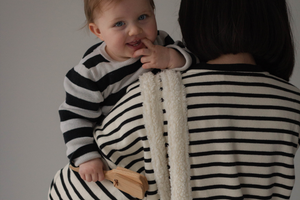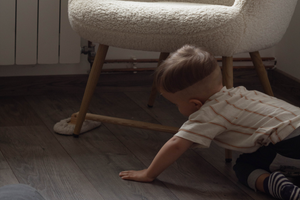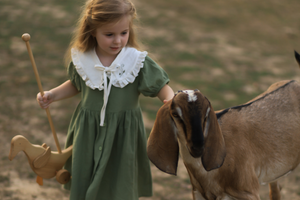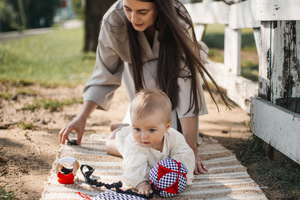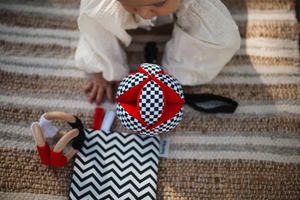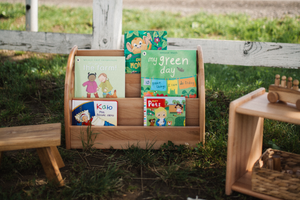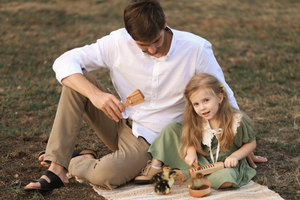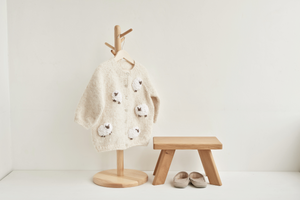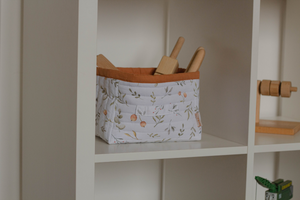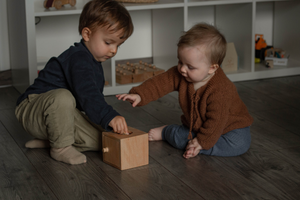If we were to describe the Montessori space for children from birth to one year in a few words, it would be a calm, cozy place that encourages learning through play.
In such an environment, children can explore their abilities at their own pace. These principles are beneficial for those committed to raising a child using the Montessori method and for those who intuitively feel the need for it but may not be ready to fully adopt the method. Choose what suits your family. Here's how to create a Montessori room that will grow with your child.
-
Microclimate of the Space: The Montessori environment is beneficial from birth. Infants safely acquire new experiences and feel the freedom to explore during tummy time. The Montessori room designed for infants is called "nido," meaning "nest" in Italian. The warmth, love, and connection felt in the womb are now transferred to the living space. Whether it's a corner in the parents' room or a separate room, using pleasant light or pastel shades for wall color, furniture, and decor is ideal. Ample natural light is crucial, and ventilation is necessary for room freshness. Initially, you only need a feeding and sleeping corner, but as the child grows, the space will need to accommodate play and movement zones. Planning ahead for adaptive and functional furniture is beneficial.
-
Furniture: Accessible and Simple: When choosing the first furniture, prioritize simplicity and safety. A simple mattress on the floor often suffices for the sleeping corner. A toy shelf is a fundamental element, allowing children to choose what interests them freely. A feeding area for the mother is essential for bonding and comfort. Whether breastfeeding or using a bottle, opt for a comfortable feeding chair. You'll spend a lot of time here.
-
Developmental Tools: For newborns in the sleep area, a "topponcino" is often used for added comfort. It makes it easier to transition the baby from the arms to the bed, play gym, changing table, or mirror. A wall mirror, preferably with a bar for hanging items, is a developmental tool for the child to explore their body and stimulate physical development. If space allows, parents often choose play gyms that can be adjusted with changing attachments to engage and develop the child daily.
-
Decor and Inspiration: Soft rugs in muted colors contribute to a cozy and warm atmosphere. Choose rugs that won't hinder crawling. Parents often opt for mat-rugs that are warm and easy to care for in play areas. Wall art serves a decorative and educational purpose, bringing joy to the child.
-
Safety: Above all, prioritize safety. Ensure that the environment is safe for both parents and the child. A well-thought-out and safe space contribute to your child's independence from an early age.
Parenting is a balancing act. As you understand your child's rhythm, be prepared for their unpredictable nature. In the first years of life, where significant growth occurs, feel free to adapt and modify as needed. Trust your instincts, as you know your child best.


